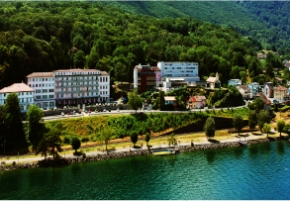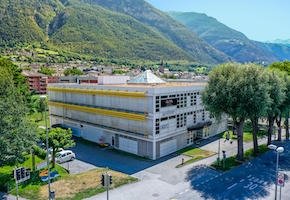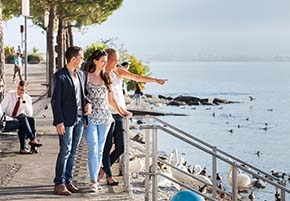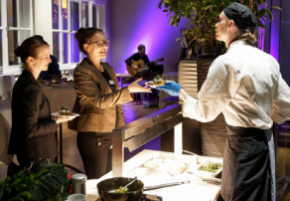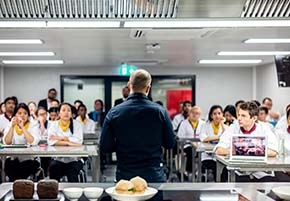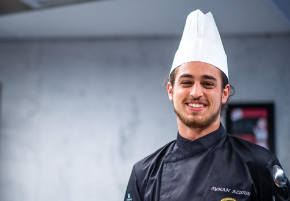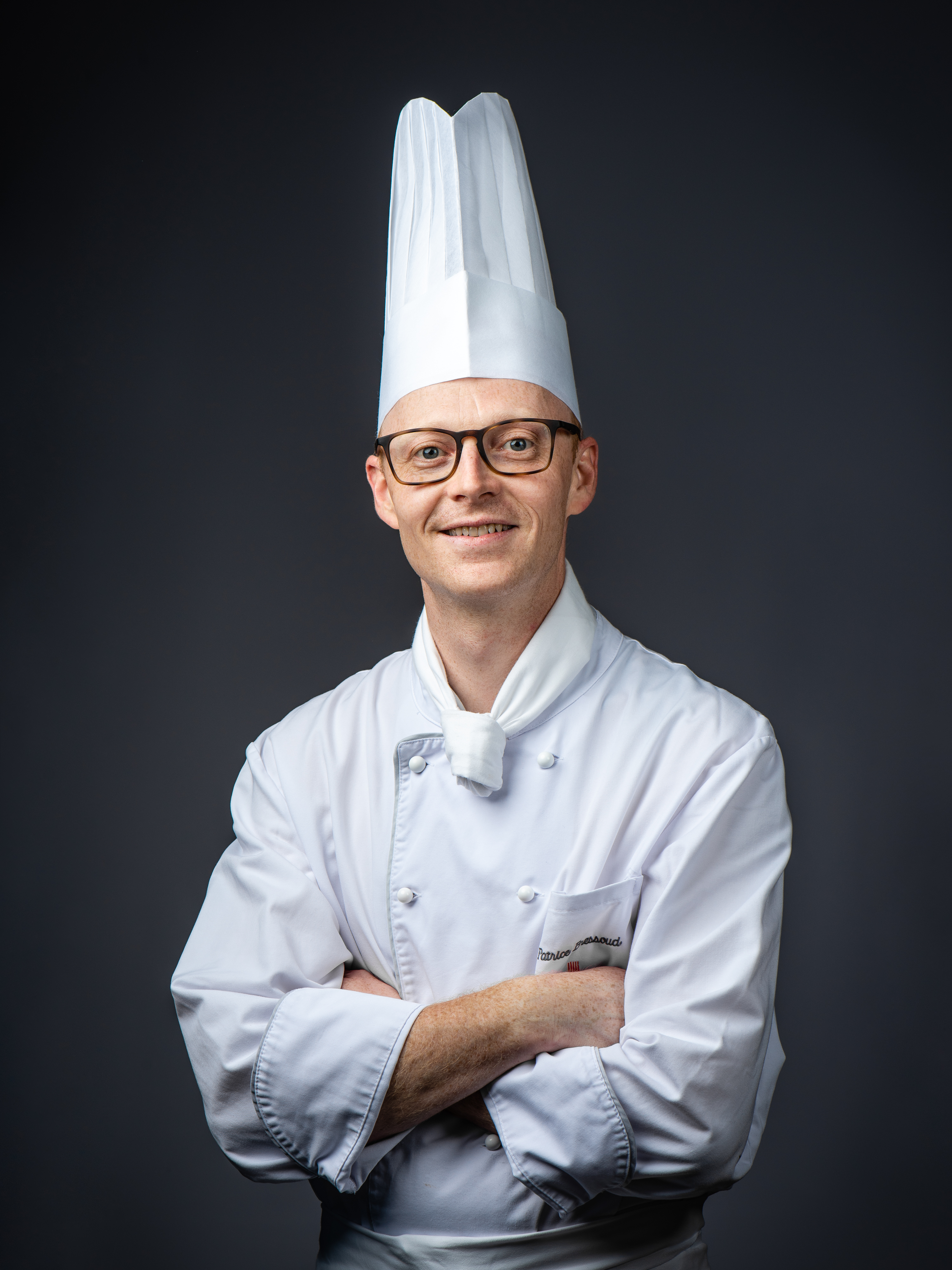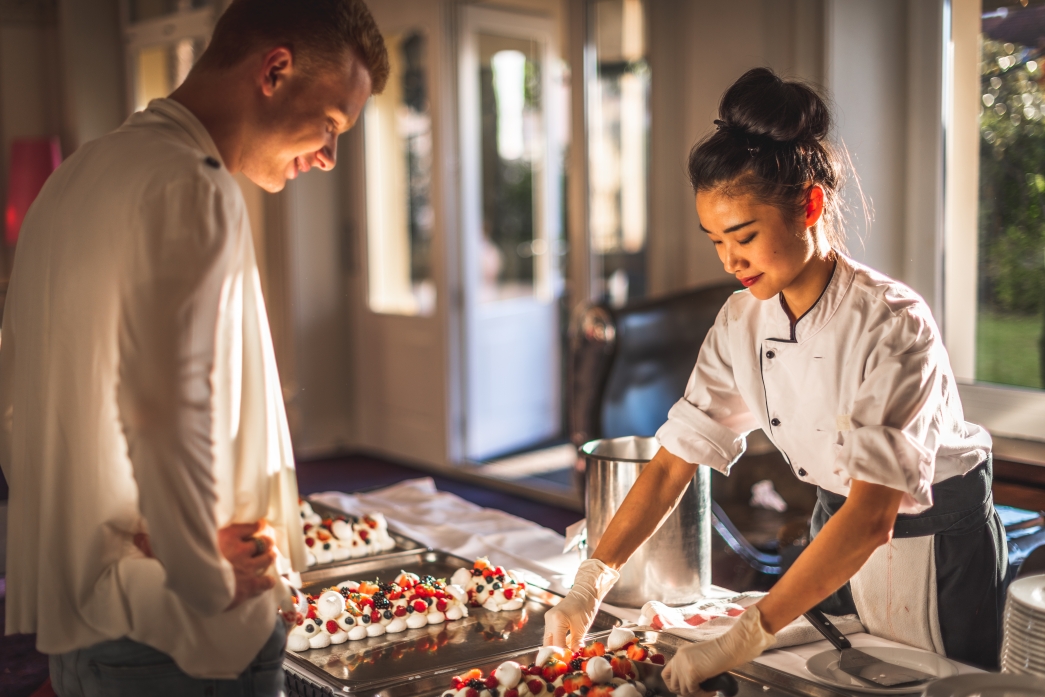- About
- Programs
- Campus Life
- Career Services
- Admissions
- News & Events
- Alumni
4 Ways Students Learn the Value of Sustainability in Our Kitchens
For Culinary Instructor Chef Patrice Bressoud, sustainability is a way of life, personally and professionally, and an essential element of his teachings at Culinary Arts Academy Switzerland. Here, the dynamic chef shares four ways students are being taught the value of sustainable food preparation practices in Culinary Arts Academy’s kitchens and restaurants.
1. Transforming surplus into sustenance
Culinary Arts Academy works closely with suppliers who pass on surplus food that would otherwise go to waste. This food is then used in the kitchens to create delicious dishes, treats and preserves.
“For example, if the fresh produce supplier, Léguriviera, has a surplus of overripe bananas that would otherwise have to be thrown away, they pass them on to us,” explains Chef Patrice, who emphasises that disposing of food waste is an expensive business in Switzerland, and in many other parts of the world. “Our job, is to come up with creative ways to use these bananas in our kitchens to serve in our campus restaurants. For a whole week in the campus’ Lakeview restaurant, we’ll suddenly have banana breads, pies and mousses – everything banana!” he laughs.
“These products are free, so we make the best of them. Last summer, there were all of these strawberries that were going to go off, so we taught the student chefs how to process them, turning them into jams and syrups, or goods that are easy to freeze. This way, nothing goes to waste and students learn valuable lessons about being innovative in the kitchen and sustainable practices become second nature for them.”
2. Shopping seasonally and locally
Chef Patrice says it is important that students understand that buying foods that are in season from local suppliers makes for good quality food. “Sure, you can get your strawberries year-round, but they’ll be from abroad, often inflated with chemicals to make them look better and taste of less,” says Chef Patrice, who has worked in luxury hotels and Michelin-starred restaurants around the world. “I want our students to understand that if you have mushrooms, you have them for a season and once they’re finished, they’re finished – until the next season. While they are in abundance, it is important to use them as much as possible in your dishes – and learn how to preserve them for future use when they are out of season.”
3. Buy as close to the source as possible
Chef Patrice says students are given an understanding of the production process of fresh produce so that they can make informed decisions and embrace sustainable practices. “We try to explain to the students that, as a farmer, you always lose a percentage of your crops. Some of the crop is lost before or during harvesting, and more is lost during the processing, when the produce is packaged. Even more will go to waste during transportation to the supermarket, and another portion will expire on the shelves,” says Chef Patrice.
He explains to students that because of all of these steps, from one ton of produce, only 200kg is consumed. Similarly, the farmer only receives a small percentage of the value of the product compared to its sale price in a supermarket.
Chef Patrice says that by being given an understanding of this production process, students are taught that it is much better to go straight to the farmer to buy produce for their restaurant or food outlet. “Not only is the price of the fresh produce cheaper, but you’re wasting less food, and the farmer is getting paid more. Also, the farmers are usually a lot more reliable than the supermarket.”
4. Innovation breeds success
One of the hardest things for students to understand, says Chef Patrice, is that not everything is, nor should, be available to us at all times. Coming to terms with this is an essential element of sustainable practices in the industry. “I want students to realize that in the culinary world, this is what makes things interesting. You use what you have and get creative.”
During his time working in the Caribbean, Chef Patrice recalls coming up with a dessert called “fruishi” – sushi, using sticky risotto rice, and fruit and chocolate, because that was all he had to work with. “A limited amount of ingredients incites innovation,” explains Chef Patrice. “And innovation is key to sustainability, not only in hospitality establishments, but in every industry.”
To find out more about Culinary Arts Academy Switzerland’s programs, click here.
#Faculty








